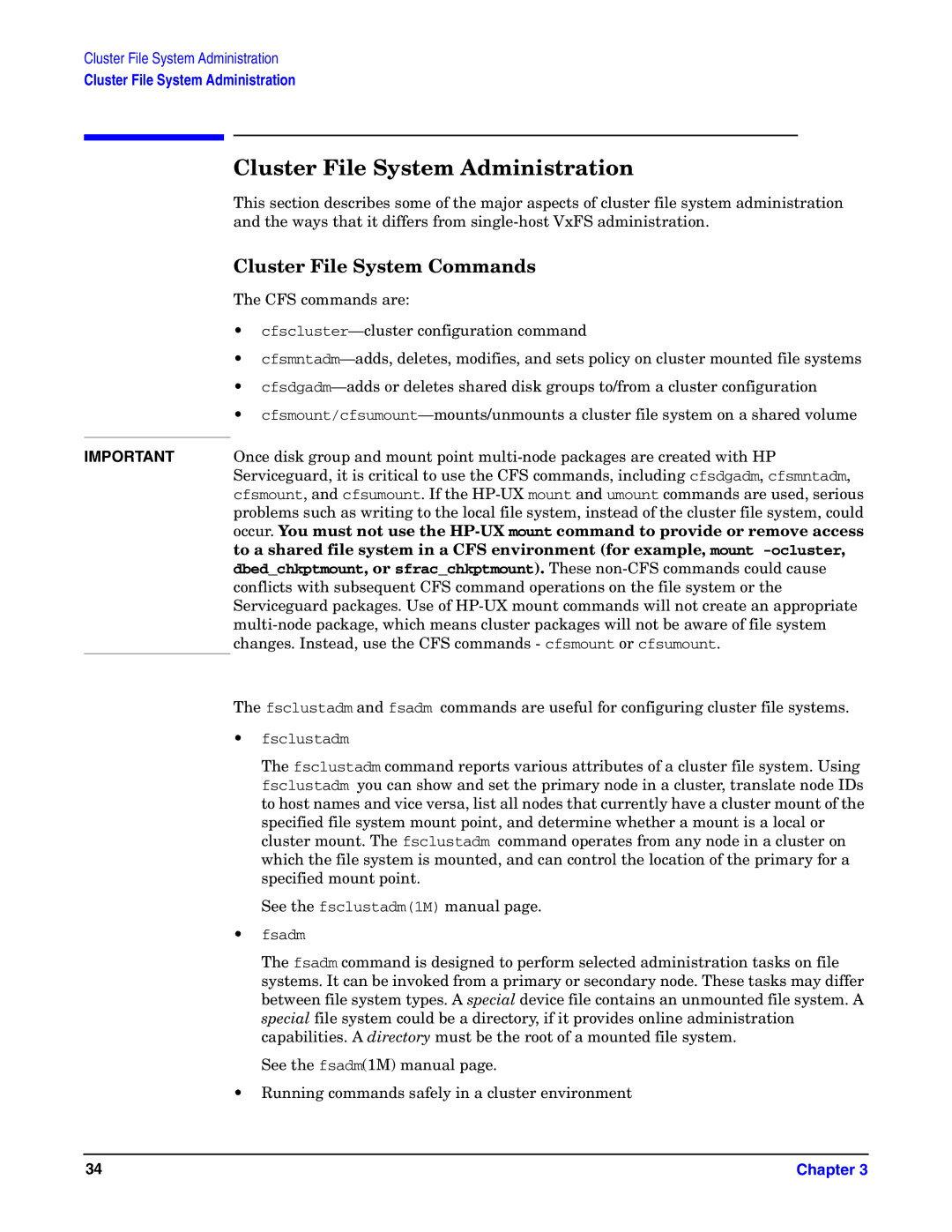
Cluster File System Administration
Cluster File System Administration
IMPORTANT
Cluster File System Administration
This section describes some of the major aspects of cluster file system administration and the ways that it differs from
Cluster File System Commands
The CFS commands are:
•
•
•
•
Once disk group and mount point
The fsclustadm and fsadm commands are useful for configuring cluster file systems.
•fsclustadm
The fsclustadm command reports various attributes of a cluster file system. Using fsclustadm you can show and set the primary node in a cluster, translate node IDs to host names and vice versa, list all nodes that currently have a cluster mount of the specified file system mount point, and determine whether a mount is a local or cluster mount. The fsclustadm command operates from any node in a cluster on which the file system is mounted, and can control the location of the primary for a specified mount point.
See the fsclustadm(1M) manual page.
•fsadm
The fsadm command is designed to perform selected administration tasks on file systems. It can be invoked from a primary or secondary node. These tasks may differ between file system types. A special device file contains an unmounted file system. A special file system could be a directory, if it provides online administration capabilities. A directory must be the root of a mounted file system.
See the fsadm(1M) manual page.
•Running commands safely in a cluster environment
34 | Chapter 3 |
